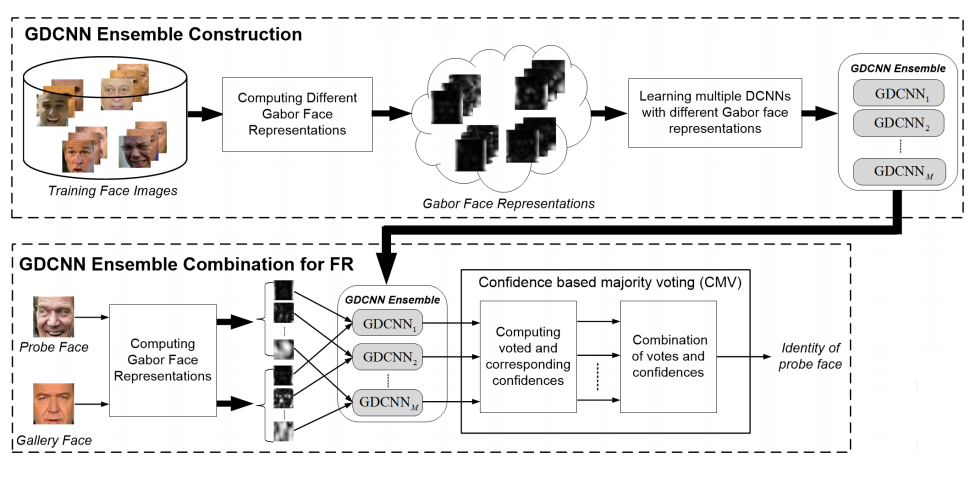- ALL COMPUTER, ELECTRONICS AND MECHANICAL COURSES AVAILABLE…. PROJECT GUIDANCE SINCE 2004. FOR FURTHER DETAILS CALL 9443117328


Projects > ELECTRONICS > 2020 > IEEE > DIGITAL IMAGE PROCESSING
Most DCNN-based FR approaches typically employ grayscale or RGB color images as input representations of DCNN architectures. However, other effective face representation methods have been developed and incorporated into current practical FR systems. In light of this fact, the focus of our study is to employ Gabor face representations in the design of DCNNbased FR frameworks to improve FR performance. To this end, we develop a novel “Gabor DCNN (GDCNN) ensemble” method that effectively applies different and multiple Gabor face representations as inputs during the training and testing phases of a DCNN for FR applications. The proposed GDCNN ensemble method primarily consists of two parts: 1) GDCNN ensemble construction and 2) GDCNN ensemble combination. The goal of the former part is to build an ensemble of GDCNN members (i.e., base models), each learned with a particular type of Gabor face representation. The objective of the latter part is to adaptively combine multiple FR outputs of individual GDCNN members. We perform extensive experiments to evaluate our proposed method on four public face databases (DBs) using the associated standard evaluation protocols.
Deep convolutional neural networks (DCNN)
The proposed method consists of two primary components: (a) GDCNN ensemble construction and (b) GDCNN ensemble combination. In GDCNN ensemble construction, different types of Gabor filters obtained by altering parameters such as scales and orientations are used to derive multiple and different Gabor face representations, each of which include a two-dimensional (2D) image formation. Each different Gabor face representation is then separately employed to learn a corresponding DCNN, generating a so-called GDCNN ensemble. The objective of our GDCNN ensemble combination is to combine multiple FR outputs obtained from individual GDCNNs in an effective and adaptive manner. For this purpose, we develop a novel confidence-based majority voting (CMV) scheme that is designed to consider the number of votes for an identity (class) label (received from the ensemble of GDCNNs) and the associated confidence values of these votes during the combination of FR outputs. By fusing the number of votes and corresponding confidence values, the identity of a given probe (test) face image can be determined.
BLOCK DIAGRAM
